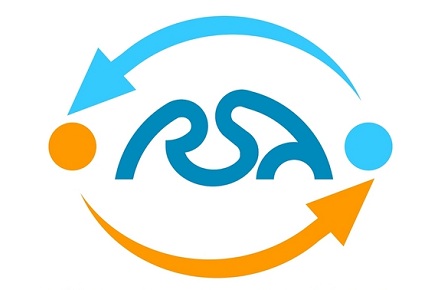I recently visited a large caterer who had received a warning from his local EHO that his HACCP was not working effectively and that amendments were necessary. The plan had been written by the caterer based on the Scottish CookSafe Food Management System. This is a very effective food management system, but to fully understand how CookSafe works and to adapt it to best meet your food businesses needs requires knowledge that can only be gained through HACCP and food safety training to a Level 3 standard. (By Anthony Bowmer of RSA Food Safety)
 |
| [relatedPosts title=”Related Posts”] |
|
|
At the audit wrap up we compared my observations with the EHO’s report and found the outcome very similar. The management system did not properly identify high risk foods; the staff did not fully understand which foods were high risk and significant mistakes were being made from delivery through to storage.
Later that week I was working with EHP’s. One had just been informed by a restaurant in her district that they have been subject to food poisoning complaints. The EHP knew the restaurant well and at the end of the call told everyone what had happened, she ended her sentence; “Isn’t it a pity when you know the caterer is doing everything and they still have a food poisoning”.
The two incidents, the cater and his confusion over what are high risk foods and the EHP not knowing what more could be done got me thinking.
Not understanding the term high risk is not surprising, the term is used differently by food experts, authorities, doctors and nutritionists. For example if you visit USA sites reporting FDA sources, high risk is used to describe the foods that are currently making Americans the most sick, not those foods that best support bacterial growth. Visit this site to learn that in the USA leafy greens top the list; http://cspinet.org/new/pdf/cspi_top_10_fda.pdf. At this site High Risk is used to describe foods that present a “high risk” of being contaminated.
The confusion does not end there; if we look at other industry sectors, such as the care industry, High Risk foods become those that are most likely to cause vulnerable persons harm. At www.HealthCastle.com they talk about common high risk foods associated with chocking in toddlers, http://www.healthcastle.com/common-high-risk-choking-foods-toddlers.
The term high risk foods can also be used by people concerned about health to describe a food that presents a raised risk of causing cancer. http://greenerlifes.com/59/10-high-risk-foods-and-drinks-for-cancer/ is a good example; at the top of their list is charred food, which creates heterocyclic aromatic amines.
Others involved in anaphylaxis campaigns, look on certain foods as being high risk, see http://www.anaphylaxis.org.uk/information/common-food-allergens.aspx.
All of the above are good definitions and all have their merit but they are not very useful when describing a food that that easily supports the multiplication of pathogenic micro-organisms and so requires time and temperature control to stay safe to eat, or foods that are vulnerable to contaminated.
So for HACCP what is a good definition for High Risk Food? Like above there is no one agreed definition. The CIEH Level 4 food safety text book “Managing Food Safety” by Dagmar Engel, Donald MacDonald and Clair Nash defines High Risk Food as:
“Food that easily supports the multiplication of pathogenic micro-organisms and so requires time and temperature control to stay safe to eat”
Richard Sprenger in his Level 4 text for food safety courses “Hygiene for Management” defines high risk foods as:
“Ready-to-eat foods, which, under favourable conditions, support the multiplication of pathogenic bacteria and are intended for consumption without treatment, which would destroy such organisms”.
In the first definition raw meats and fish would be included in the definition, in second raw meat and fish would be excluded if it was to be cooked before being eaten.
The problem of having different definitions is that this effects which controls you employ. If you use the first definition, strict temperature controls would be required on both raw and cooked foods regardless how they were to be consumed. If you used the second definition temperature control of raw meats and fish that are subsequently going to be cooked is not necessary, other than for quality reasons.
Speaking to the caterer it was clear he was annoyed between what he had been trained (a definition similar to the 1st definition, Dagmar Engels and what both the EHO was saying, based on the second definition.
The second definition originates from the predecessor of PHLS, back in the 1970s they were able to show that around 75% of food poisonings could be related back to:
- cooked meats and poultry
- cooked meat products including gravy, meat pies, pate, cook-chill meals and stock
- milk, cream, artificial cream and unpasteurised dairy products
- cooked eggs and egg products
- shells fish, raw oysters, mussels and cooked foods
- cooked rice
All of these foods under favourable conditions support the multiplication of harmful bacteria and are intended to be eaten without treatment that would destroy such organisms. With the exception of rice they are foods high in protein, requiring strict temperature control and protection from cross contamination. These foods were term high risk.
However the picture is changing and this is probably what is catching the EHP out. Whilst a great many people still enjoy a traditional British diet that includes most of these high risk foods, others are seeking more healthy choices, particularly salads. This I believe is resulting in foods previously not given high priority on food inspections to be the very foods that put consumers at risk. Let’s compare the PHLS list above with the top 10 foods regulated by the FDA that are making Americans sick.
- Leafy Greens, i.e. salads and other food items containing leafy greens—iceberg lettuce, romaine lettuce, leaf lettuce, butter lettuce, baby leaf lettuce (immature lettuce or leafy greens), escarole, endive, spring mix, spinach, cabbage, kale, arugula or chard.
- Eggs
- Tuna
- Oysters
- Potatoes, mainly in the form of potato salad
- Cheese, hard, soft, mild, sharp, melted and sliced—cheese products all implicated.
- Ice-cream mainly made up in the home or restaurant, using raw eggs.
- Tomatoes, contamination during growing.
- Sprouts, both raw and lightly cooked sprouts
- Berries, strawberries, raspberries, blackberries, and other berry products
Looking at this newer list, it quickly becomes evident that we need to improve our focus. The hazards now come from all areas of the food supply; not only high-risk products, like meat and dairy, but also the must-eat components of a healthy diet, like fruits and vegetables. It is clear to me that three actions need to be taken to protect customers from harm:
- At restaurants and food outlets; chefs and managers of food outlets attend level 3 HACCP and Level 3 food safety training so they have the tools to effectively introduce HACCP and prerequisite programmes.
- At the farm, better enforcement of good agricultural practice (GAP) is instigated.
- In all parts of the food supply chain, businesses strive to improve their food safety culture.
With these three actions in implemented we will be doing more to control hazards from all areas of food supply, the caterer will be less confused by conflicting advice and the EHP will only rarely received calls from businesses that have done everything but still become involved with food poisoning complaints.
.





